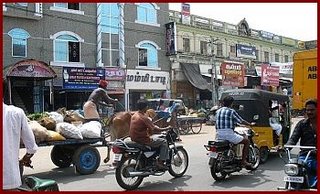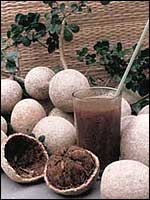Rules Of The Road:
Indian Style
I seem to have been mentioning Tiruvannamalai roads a lot with postings on the rotation of tyres on trucks, our new town Traffic Signals, electric scooters and the sad plight of working animals being made to tackle the frightening traffic congestion of downtown.
As small as Tiruvannamalai is, believe me it gets dangerous on the roads. So read these Rules of the Road and realise what may seem satirical is actually quite literal on the roads of South India.If I find out who wrote them I will let you know; but it wasn't me!
Travelling on Indian Roads is an almost hallucinatory potion of sound, spectacle and experience. It is frequently heart-rending, sometimes hilarious, mostly exhilarating, always unforgettable and, when you are on the roads, extremely dangerous.
Most Indian road users observe a version of the Highway Code based on a Sanskrit text. These 12 rules of the Indian road are published for the first time in English AND PLEASE REMEMBER THIS IS A SATIRE NOT TO BE TAKEN SERIOUSLY!:
ARTICLE I: The assumption of immortality is required of all road users.
ARTICLE II: Indian traffic, like Indian society, is structured on a strict caste system. The following precedence must be accorded at all times. In descending order, give way to:
Cows, elephants, heavy trucks, buses, official cars, camels, light trucks, buffalo, jeeps, ox-carts, private cars, motorcycles, scooters, auto-rickshaws, pigs, pedal rickshaws, goats, bicycles (goods-carrying), handcarts, bicycles (passenger-carrying), dogs, pedestrians.

ARTICLE III: All wheeled vehicles shall be driven in accordance with the maxim: To slow is to falter, to brake is to fail, to stop is defeat. This is the Indian drivers' mantra.
ARTICLE IV: Use of horn (also known as the sonic fender or aural amulet):
Cars (IV, 1, a-c):
Short blasts (urgent) indicate supremacy, i.e. in clearing dogs, rickshaws and pedestrians from path.
Long blasts (desperate) denote supplication, i.e. to oncoming truck: "I am going too fast to stop, so unless you slow down we shall both die". In extreme cases this may be accompanied by flashing of headlights (frantic).
Single blast (casual) means: "I have seen someone out of India's 1 billion whom I recognise". "There is a bird in the road (which at this speed could go through my windscreen)." or "I have not blown my horn for several minutes."
Trucks and buses (IV, 2, a):
All horn signals have the same meaning, viz: "I have an all-up weight of approximately 12.5 tons and have no intention of stopping, even if I could." This signal may be emphasised by the use of headlamps.
ARTICLE IV: Remains subject to the provision of Order of Precedence in Article II above.
ARTICLE V: All manoeuvers, use of horn and evasive action shall be left until the last possible moment.
ARTICLE VI: In the absence of seat belts (which there is), car occupants shall wear garlands of marigolds. These should be kept fastened at all times.
ARTICLE VII: Rights of way: Traffic entering a road from the left has priority. So has traffic from the right, and also traffic in the middle
Lane discipline (VII, 1): All Indian traffic at all times and irrespective of direction of travel shall occupy the centre of the road.
ARTICLE VIII: Roundabouts: India has no roundabouts. Apparent traffic islands in the middle of crossroads have no traffic management function. Any other impression should be ignored.
ARTICLE IX: Overtaking is mandatory. Every moving vehicle is required to overtake every other moving vehicle, irrespective of whether it has just overtaken you. Overtaking should only be undertaken in suitable conditions, such as in the face of oncoming traffic, on blind bends, at junctions and in the middle of villages/city centres. Not more than two inches should be allowed between your vehicle and the one you are passing,and one inch in the case of bicycles or pedestrians.
ARTICLE X: Nirvana may be obtained through the head-on crash.
ARTICLE XI: Reversing: No longer applicable since no vehicle in India uses reverse gear.
















